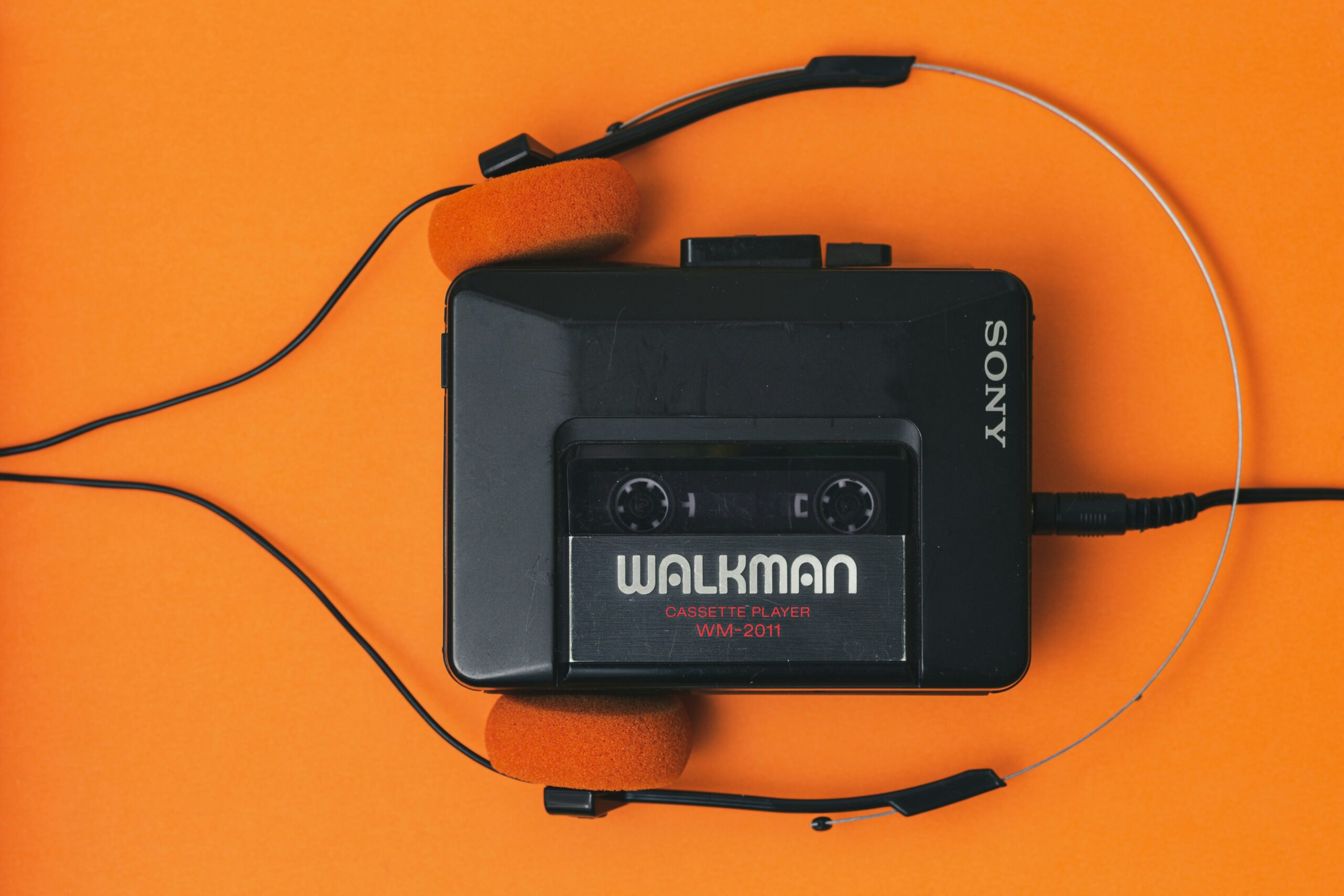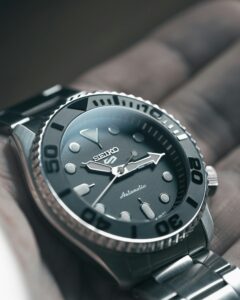In an era where music is as ubiquitous as the air we breathe, thanks to streaming services and digital downloads, it’s easy to forget the monumental shift that occurred when music went mobile. Before smartphones and MP3 players, there was the Walkman. This portable cassette player wasn’t just a device; it was a revolution that started in Japan and swept across the globe, changing the way we interacted with music and with each other. The Walkman wasn’t just a product; it was a cultural icon that marked the beginning of personal audio consumption. This article traces the Japanese origins of the Walkman revolution, exploring its design, impact, and legacy in the world of music and beyond.
1. The Dawn of the Walkman Revolution
The Walkman revolution began in 1979, a time when music was generally a shared, stationary experience. Listening to your favorite tunes meant either attending live performances or being tethered to record players and radio sets. The concept of taking music on the go was largely unexplored territory, with car radios and bulky, portable boomboxes providing the only semblance of mobility. Sony’s introduction of the Walkman changed all that, turning the act of listening to music into a personal, portable experience. This was a radical departure from the norm, fundamentally altering how people interacted with their music.
2. Sony’s Bold Leap: The Invention of Walkman
Sony’s journey to creating the Walkman was born out of a desire for personal, portable music consumption. The company, already known for its innovative audio-visual products, took a bold leap into the unknown. The project, initially dubbed the "Soundabout" in the United States, aimed to make music personal, intimate, and portable. Spearheaded by Sony co-founder Masaru Ibuka and executive Norio Ohga, the development of the Walkman was a response to Ibuka’s frustration with existing bulky portable players. He envisioned a lightweight, easy-to-carry device that allowed for private listening through headphones.
3. From Blueprint to Boombox: Walkman’s Design
The design of the Walkman was revolutionary for its time. Eschewing the prevailing trends of large, loud boomboxes, Sony opted for a compact, sleek device that prioritized portability and simplicity. The original Walkman TPS-L2, launched on July 1, 1979, featured a minimalist interface with a small set of controls and the capacity to play cassette tapes. This emphasis on compactness and ease of use was a deliberate attempt to appeal to a broad audience, ensuring that the Walkman was not just a technological marvel but a fashionable accessory as well.
4. How the Walkman Redefined Personal Audio
The Walkman redefined personal audio by introducing the concept of a private listening experience. Before its advent, music was something to be shared, often blaring from speakers in social settings. The Walkman, with its lightweight design and headphones, transitioned music into a personal sphere. Users could now curate their soundtracks, experiencing the intimacy of music without external interruptions. This shift not only changed listening habits but also influenced music production, with artists and producers considering how their work would sound in headphones.
5. The Cultural Impact of Walkman in Japan
In Japan, the Walkman’s impact was profound, resonating with the country’s tech-savvy, trend-conscious populace. It became a symbol of modernity and individualism in a society that often emphasized the collective. Young people, in particular, were drawn to the Walkman, using it to create personal spaces in crowded urban environments. The device also sparked a cultural shift towards more personal entertainment consumption, laying the groundwork for the eventual rise of personal computing and mobile technology.
6. Walkman Goes Global: Conquering the World
The Walkman’s success was not confined to Japan. It quickly became a global phenomenon, capturing the imaginations of people worldwide. Its international appeal lay in its universal proposition: music as a personal, portable experience. The device transcended language barriers and cultural differences, becoming a must-have accessory in numerous countries. Its global reach was a testament to Sony’s vision and the universal desire for personal freedom in music consumption.
7. The Evolution of Walkman Through the Years
Over the years, the Walkman evolved to keep pace with changing technologies and consumer preferences. From its initial cassette player model, Sony expanded the Walkman line to include CD players, MiniDisc players, and eventually digital music players. Each iteration of the Walkman embraced the latest advancements in audio technology, from auto-reverse mechanisms to anti-skip protection and high-resolution audio. Despite these changes, the Walkman’s core proposition—portable, personal music—remained unchanged, a testament to the enduring appeal of Sony’s groundbreaking device.
8. Iconic Walkman Models That Changed the Game
Among the numerous Walkman models released, a few stand out for their impact on the market and technology. The original TPS-L2 is iconic, known for its dual headphone jacks and compact design. The Walkman WM-101, the first model with a built-in rechargeable battery, heralded a new era of convenience. Later, the Walkman D-EJ01, a CD model, and the NW-A1000, a digital music player, showcased Sony’s adaptability, incorporating CDs and digital files into the Walkman lineup. Each of these models reflected the technological zeitgeist of their times, contributing to the Walkman’s legacy as a pioneer in personal audio.
9. Competitors Emerge in the Wake of Walkman’s Success
The Walkman’s success inevitably attracted competitors, each vying for a share of the burgeoning personal audio market. Brands like Panasonic, Aiwa, and Philips introduced their own portable music players, sparking an industry-wide innovation race. Despite the increased competition, the Walkman retained its iconic status, partly due to Sony’s continuous innovation and the deep brand loyalty it had established among consumers. The competition spurred advancements in technology and design, benefiting consumers and the industry as a whole.
10. The Digital Age: Walkman vs. Modern MP3 Players
As the digital age dawned, the Walkman faced stiff competition from MP3 players, most notably the Apple iPod. The shift towards digital music files posed a significant challenge to the Walkman, which had been synonymous with physical media. Sony responded by introducing its own line of digital Walkman players, integrating features like high-resolution audio playback and streaming capabilities. This transition marked a new chapter for the Walkman, adapting its legacy of personal, portable music to the demands of the digital era.
11. The Legacy of Walkman in Today’s Audio Industry
Today, the legacy of the Walkman is evident in the design and philosophy of contemporary audio devices. The emphasis on portability, personalization, and high-quality sound that the Walkman introduced continues to influence the development of headphones, smartphones, and streaming services. As the progenitor of personal audio, the Walkman laid the groundwork for a world where music is an intimate, omnipresent companion. Its impact extends beyond technology, shaping cultural attitudes towards music consumption and personal space.
12. Walkman Today: Nostalgia Meets Modern Technology
In recent years, the Walkman has experienced a resurgence, driven by nostalgia and a renewed appreciation for high-quality, dedicated music devices. Sony has capitalized on this trend, releasing modern Walkman models that blend classic design elements with cutting-edge audio technology. These devices cater to audiophiles and enthusiasts seeking an escape from the multi-functional nature of smartphones. The Walkman’s enduring appeal, in the age of streaming and digital downloads, underscores the timeless desire for a personal, immersive music experience.
The Walkman revolution, originating from Japan, transformed the landscape of personal audio, turning music into a portable, intimate experience. Throughout its history, the Walkman has evolved, adapting to new technologies and consumer demands without losing sight of its core identity. Today, it stands as a testament to innovation, cultural impact, and the enduring power of music. As we look back on the Walkman’s journey from a simple cassette player to a modern digital music player, it’s clear that its legacy is not just about the devices themselves but about changing the way we live with music. The Walkman, in its various incarnations, continues to inspire, proving that great ideas have the power to revolutionize our world.








